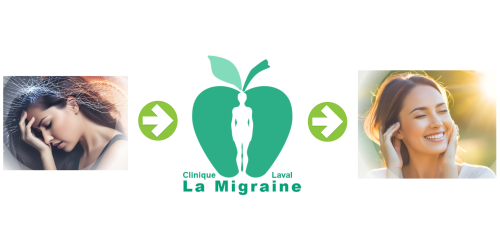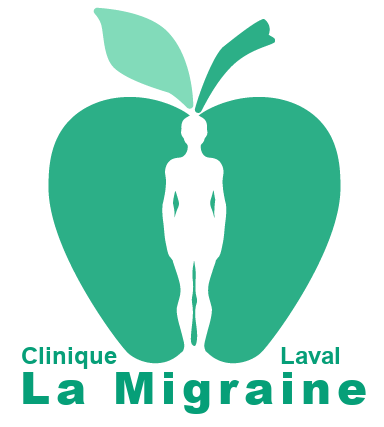We fully understand what you’re going through: Finally relieve your cluster headaches
Horton’s headaches, also known as Cluster Headaches, are much more than just a headache. They are intense pains, often described as unbearable, usually localized around one eye or temple, accompanied by tearing, nasal congestion, or redness in the eye. These attacks can deeply disrupt your daily life and leave you feeling powerless.
At the Clinic La Migraine, we have dedicated over twenty years to studying and treating migraines and headaches, including cluster headaches. We understand the specifics of this condition, its triggers, and its impact on your life. We are here to offer you tangible and personalized solutions to help you regain a better quality of life.
>Tangible Solutions, Proven Results
-
Reduction of over 70% in the intensity, frequency, or duration of episodes in the greater majority of our patients.
-
Personalized approaches tailored to your history and lifestyle.
-
Over 20 years of proven expertise in treating chronic, hormonal, vestibular migraines, and more.
>A team that understands and supports you.
- Attentive listening to your unique situation and needs.
- Treatment plans tailored to your progress, continuously reviewed for optimal effectiveness.
- Compassionate care with Dr. Daniel Lachance, chiropractor, to help you take control of your life again.
>Do not let cluster headaches control your day
You deserve to regain peace and freedom. Contact us today to schedule an appointment and discover how our methods can alleviate your headaches… or even make them disappear.
Contact us now or call 450-689-1223.
Life is too short to spend it in pain. Don’t wait any longer: you have the right to live fully.
Navigating through cluster headaches
Synonyms: Horton’s headache
Cluster headaches, also known as Horton’s neuralgia or is a type of trigeminal autonomic cephalalgia, is a condition characterized by extremely intense pain attacks. These attacks typically involve unilateral pain, usually localized around the eye, temple, or forehead. The duration of the attacks ranges from 15 to 180 minutes, with a frequency of one attack every two days to eight attacks per day. Unlike migraines, the pain from cluster headaches typically affects the same side of the face. This rare condition predominantly affects adults, with a higher prevalence in men.
Symptoms
-
Redness and tearing of the eye on the affected side
-
Congestion or nasal discharge
-
Increased sweating on the forehead and face
-
Pupil constriction
-
Drooping of the eyelid
-
Physical agitation with a need to move
The pain is described as extremely intense, sometimes considered one of the most painful experiences a human can endure. This intensity has earned it the nickname “suicidal headache.”
There are two forms of cluster headaches:
-
Episodic: The attacks occur over periods ranging from 7 days to a year, followed by pain-free intervals of at least 14 days.
-
Chronic: The attacks persist for more than a year without remission periods or with remission periods lasting less than 14 days.
Here are the criteria for cluster headache as indicated by the ICHD-3:
A. At least five attacks fulfilling criteria B-D:
B. Severe or very severe unilateral orbital, supraorbital and/or temporal pain lasting 15-180 minutes (when untreated)
C. Either or both of the following:
-
At least one of the following symptoms or signs, ipsilateral to the headache:
-
Conjunctival injection and/or lacrimation
-
Nasal congestion and/or rhinorrhoea
-
Eyelid oedema
-
Forehead and facial sweating
-
Miosis and/or ptosis
-
-
A sense of restlessness or agitation
D. Occurring with a frequency between one every other day and 8 per day
E. Not better accounted for by another ICHD-3 diagnosis
To be considered episodic, cluster headaches occur in periods lasting from 7 days to one year, separated by pain-free intervals of at least 3 months.
To be considered chronic, cluster headaches occur for one year or more without remission, or with remission periods lasting less than 3 months.
Sources:
ICHD-3
CHUM, “La Céphalée de Horton,” Centre de littératie en santé du CHUM, 2019.
Schmerzklinik Kiel, 2017. https://schmerzklinik.de/fr/service-aux-patients/connaitre-les-cephalees-en-grappe/qu-39-est-ce-que-la-cephalee-en-grappe/
“Céphalée en grappe : cause, signes, est-ce une migraine ?”, Le Journal des Femmes – Santé, 2023. https://sante.journaldesfemmes.fr/fiches-sante-du-quotidien/2885819-cephalee-en-grappe-symptomes-cause-une-migraine/
Contact Form– We’re accepting new patients
We would be delighted to assist you and discuss your migraines. No referral is necessary. Simply fill out this form and submit it, and we will get in touch with you.
You are on the right path to your first consultation and relief from migraines!
or call us directly:

